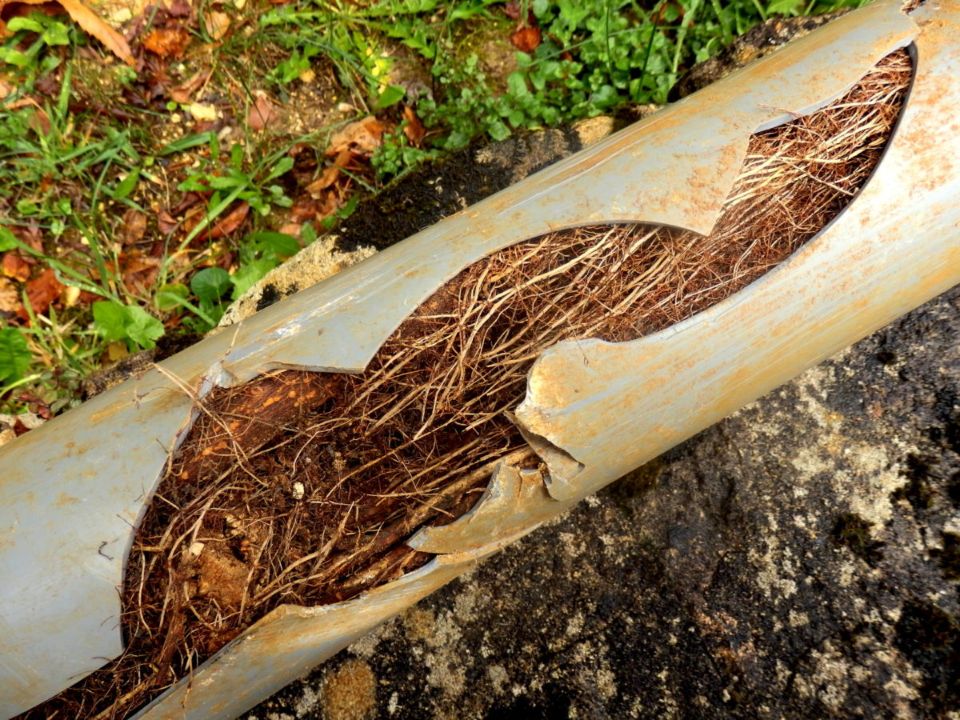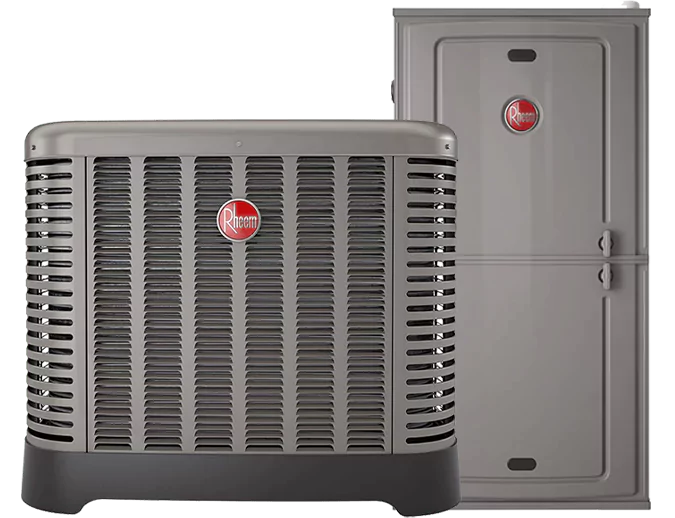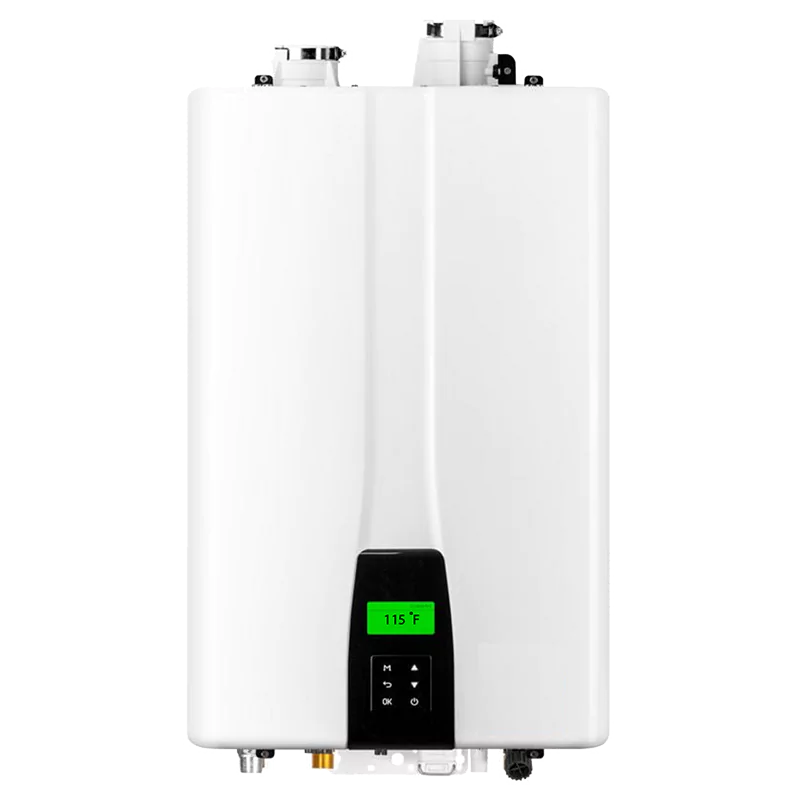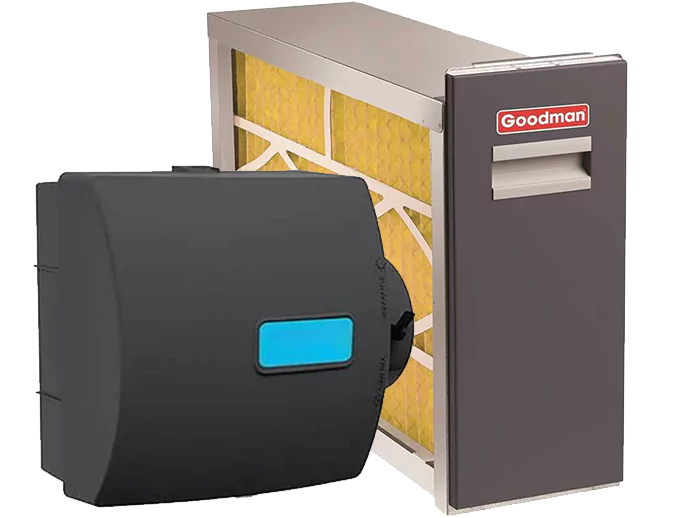Trees are the most beautiful and majestic of all nature’s creations—a gift to our world that we should treasure. They give us oxygen and make the world look pretty. But they can also be pretty inconvenient when they break your sewer pipes. A tree that breaks a sewer pipe can cause a lot of damage, including flooding and mold growth in your home or office. This can lead to an expensive repair bill, which could have been avoided if you had known what causes trees to break sewers in the first place. Here, we’ll tell you everything you need to know about why trees break sewers, including how to stop it from happening again in the future. Moreover, when it’s time to call a professional Sewer Smoke Test Plumber in Calgary to inspect and repair your sewer lines.
Do Trees Break Sewer Lines?
Yes. Trees are the number one cause of sewer line breaks. According to the National Association of Professional Plumbers, tree roots can grow up through the pipes and break them, causing massive flooding and other problems that can cost homeowners in Calgary thousands of dollars in repairs.
If you notice any signs of leaking or damage to your sewer line, contact a professional plumber immediately. They will be able to check and see if there are any roots growing into the pipes or if the tree has done any other damage.
Which Are The Worst Trees For Sewer Lines?
The worst trees for sewer lines are the ones that grow in your yard. I know I know: it sounds like we’re being facetious, but it’s not! When you plant a tree in your yard, you’re essentially planting your yard’s root system, which means it’s going to grow and spread outward.
And if that tree is planted too close to your sewer line, there’s a chance that roots will penetrate the pipe and create leaks or other problems. Here are some tree and plant species that often cause sewer line damage:
- Willow Trees
- Poplar Trees
- Silver Maple Trees
- American Sycamore Trees
- American Elm Trees
- White Ash Trees
- Weeping Willow Trees
- Black Locust Trees
- Norway Maple Trees
- Aspen Trees
- Birch Trees
How Tree Roots Can Affect Your Sewer Lines?
Have you ever wondered if your tree’s roots are causing problems with your sewer lines?
After all, it’s common knowledge that trees grow their roots deep into the ground and can sometimes push up against pipes or other structures. But how do we know if a tree is actually causing a problem with the sewer lines in our yard? And what can we do about it?
The quick answer is: yes, tree roots can cause issues. And to make matters worse, there are several ways that tree roots can affect your sewage system. Here are four of them:
- Infiltration
Infiltration is when a tree root grows into the pipe and cracks it, causing water to leak into your home or business. If left unchecked, this infiltration can cause serious damage to your property.
- Pipe Damage
Another way trees affect your sewer lines is by damaging them directly. When a tree root grows through a pipe, it can cause the pipe to fracture or burst, causing flooding and leaks in your home or business.
- Blockages
When tree roots get into your sewer line, they can cause blockages. If a tree root that has gotten into your drainpipe gets big enough, it can clog the pipe and stop water from flowing through it.
- Reduced Flow Capacity
Tree roots also reduce the flow capacity of your sewer line by growing in it, which can cause backups and backups in your home when you’re trying to flush the toilet or wash your hands.
7 Signs of Tree Roots in Sewer Line
The sewers of your home are a lot like the veins in your body: they carry water and any waste away from your home, but they’re also incredibly important to the health of your home.
So when you notice signs that tree roots are growing in your sewer line, it’s time to take action. You might not think about it all that often, but tree roots can actually cause severe damage to your sewer lines if left untreated. This can result in costly repairs or complete pipe failure.
The damage caused by tree roots in your sewer line can be significant. In fact, they can cause much more damage than any amount of money you might spend on them—and they could even cost you your life.
So if you are wondering how to identify if tree roots are damaging your pipes, we’ve made a list. If you notice any of these signs of tree roots in the sewer line, then it’s time for an inspection by a professional Sewer Smoke Test Plumber in Calgary. Let’s take a look:
- Slow Draining
If you’re noticing that your toilet takes longer to drain than usual, that could be an indication of tree roots in your sewer line. Tree roots can grow into pipes and cause them to clog up, which slows down the flow of water and results in slow-draining toilets.
- Gurgling Noises
Tree roots can also cause gurgling sounds coming from your sink or toilet if they have found their way through your sewer line and into the pipe leading to your home. The sound is caused by air bubbles being released from the blocked pipe as water flows past it.
- Persistent Clogs
Tree roots tend to grow larger as they age and damage the pipe itself, so if you’ve been having problems with clogs in your drains for more than a few months, there’s a great chance that tree roots have grown into them and blocked up the flow of water.
- Foul Odors
Tree roots produce gasses as they grow, which can come out of your drain when they enter into contact with water. These gasses can create foul odors, making your drain impossible to ignore!
- Leaky Pipes
If you notice a leaky pipe or other plumbing problem that doesn’t seem to have an obvious cause, tree roots could be at fault. The point where the tree comes into contact with the pipes is often weak enough for water pressure to cause the pipes to rupture over time—and eventually, cause problems for you!
- Sewage Backups
One of the most obvious signs of tree root damage is sewage backups into your home or basement. This happens when roots from a nearby tree or shrub press against and damage the sewer line on their way through the soil. If you notice sewage backing up into your home, it’s time to call in a professional plumber for a thorough inspection.
- Water Damage
Another sign of sewer line damage caused by tree roots is water damage on walls and floors surrounding the area where the plumbing pipe enters the house from outside. This might include discoloration or peeling paint on walls, wet patches on floors, or other signs of moisture intrusion that could indicate a leaky pipe connection between outside and inside pipes leading out from under sinks or toilets.
How to Clear Sewers from Trees?
It’s no secret that trees are the best thing about the outdoors. They offer shade, beauty, and a sense of calm—but there’s one thing that can ruin even the most beautiful tree in your yard: sewer water.
Sewer water is a serious problem for many homeowners in Calgary, but there are some simple ways to stop it from entering your home. Below are some common methods used to clear sewers from trees:
- Mechanical Root Cutting
This method involves cutting the roots of the tree with a machine. This will prevent the roots from growing back into the sewer. This method can be used on young trees that do not have deep roots that go directly into the sewer line. It is not recommended for older trees with deep and solid roots that are able to penetrate underground pipes.
- Trenchless Lining
If you don’t have the budget for a mechanical root-cutting type of project, or if you’re dealing with a smaller number of trees, then trenchless sewer replacement might be right for you. The trenchless lining is a way to repair damaged sewer lines without digging up the ground around them. This involves using epoxy or other material to fill in damaged pipes so they don’t need to be replaced completely—it’s much cheaper than traditional methods but still effective at clearing out trees from your sewer system.
- Hydro Jetting
Hydro jetting is another method that uses high-pressure water jets in order to force debris out of clogged drains and pipes. However, unlike Trenchless Bursting, this technique does require some digging—usually just one small hole around each pipe so that they can be cleaned properly afterward.
- Trenchless Bursting
Trenchless bursting is a term used to describe a process where the blockage is cleared using special machines that break up the tree roots or other material that has caused the blockage. This technique is preferred because it does not require digging or excavation to clear the sewer. It also does not require any road closures.
The method can be used for both residential and commercial properties. The procedure involves inserting a camera into the sewer line so that it can be inspected by an experienced plumber and technician in Calgary, who will then decide if there are any problems with it and what needs to be done next.
- Chemical Root Killing
If you have a tree that grows into your sewer line, you may be able to clear the sewer by applying chemicals that kill the roots. It is important to note that this method can only clear the sewer for a few months and will have to be repeated.
- Pipe Relining or Replacement
Another method is pipe relining or replacement, which involves digging up your yard (or part of it) and replacing or relining the parts of the pipe where it intersects with the tree roots so that they no longer grow into your drain pipes. This process also takes about three to six months before you can remove the tree safely without damaging anything else in your home.
Best Trees To Plant Near Sewer Pipes
Do you know that saying “trees are the lungs of the earth”? Well, it’s true. But that doesn’t mean you have to plant one right next to your sewer pipe. If you’ve ever been on a hiking trail and noticed that there was a tree growing out of a crack in the ground, you might have wondered why it was there.
The answer is simple: trees can be very damaging to sewer pipes when they’re planted too close to them—and yes, it happens more often than you think. So if you want to make sure your lovely tree never damages your sewer pipe, below are some tips on selecting the best trees for sewer lines:
- Choose trees with non-invasive root systems, such as fruit trees, ornamental cherry trees, or dogwood trees.
- Opt for shallow-rooted trees like Japanese maple or crepe myrtle, which are less likely to cause damage to sewer pipes.
- Consider planting smaller or dwarf tree varieties to minimize the potential for root intrusion.
- Maintain a safe distance between trees and sewer lines, ensuring at least 10 feet or more of separation.
- Regularly monitor and prune tree roots to prevent them from encroaching on sewer pipes.
- Consult a professional arborist or landscape expert for advice on suitable tree species and proper planting techniques near sewer pipes.
FAQs
Is it illegal to plant trees overtop a sewer easement?
It depends.
The law is pretty clear on this one: You can plant trees over the top of a sewer easement, but you have to make sure they’re not blocking the flow of water.
If you don’t, you could face some serious fines.
What to do when a neighbor plants trees over my sewer line in Euless, Texas?
When the neighbor plants trees over your sewer line in Euless, Texas, it’s hard to know what to do.
On the one hand, you don’t want to be that neighbor who complains about everything. On the other hand, you also don’t want your house to flood every time it rains.
So how can you balance being a good neighbor with meeting your needs? Here are some tips!
Take pictures
- Talk with your neighbor before they plant anything
- Ask them nicely to remove their new plants from over your sewer line in the Euless, TX area
Which shade trees do not get into your sewer line?
Some trees like to get into your sewer line.
Some trees, like the willow and the weeping willow, have roots that can burrow into the sewer system and clog it. Other trees, like the ginkgo, have leaves that are too big for a standard dumpster and make it difficult to clean up after they fall.
So what shade trees don’t make your sewer lines cry? Here’s our list of sewer-safe trees:
- Pin oak (its leaves are too small to be an issue)
- Red maple (it doesn’t shed its leaves)
- Cottonwood (its roots grow in the ground and not through pipes)
- Flowering Dogwood
- Japanese Maple
If the city trees damage my sewer line, what can I do?
Well, you can either call the city and ask them to fix your tree-related sewer line damage, or you can hire a professional plumber to check it out.
Let ClearView Services Provide Professional Sewer Smoke Tests in Calgary!
Tree roots can wreak havoc on your sewer lines. They can break off and leave behind holes that cause leaks, or worse, back up the system and flood your home. If you’re worried about tree roots causing sewer line damage, let ClearView Services provides a professional sewer smoke test in Calgary.
We also offer same-day service and will send one of our highly trained technicians out to your home or business as soon as possible. Our professional sewer smoke test will help you with an exact picture of what’s going on in your sewer line. We’ll use our state-of-the-art equipment to perform a thorough inspection, then show you what we find and explain how it affects your home or business. We offer a broad range of services to help prevent tree roots from damaging sewer lines, including:
- Sewer rodding Calgary
- sewer cleaning Calgary
- sewer line camera inspections in Calgary
ClearView Services has been performing high-quality sewer smoke testing for over 30 years, and our expertise is unmatched in providing Sewer Solutions and Services in Calgary.
So why wait? Give us a call today at (587) 741-4079 to schedule an appointment!
Trees are the most beautiful and majestic of all nature’s creations—a gift to our world that we should treasure. They give us oxygen and make the world look pretty. But they can also be pretty inconvenient when they break your sewer pipes.
A tree that breaks a sewer pipe can cause a lot of damage, including flooding and mold growth in your home or office. This can lead to an expensive repair bill, which could have been avoided if you had known what causes trees to break sewers in the first place.
In this article, we’ll tell you everything you need to know about why trees break sewers, including how to stop it from happening again in the future. Moreover, when it’s time to call a professional Sewer Smoke Test Plumber in Calgary to inspect and repair your sewer lines,
Do Trees Break Sewer Lines?
Yes. Trees are the number one cause of sewer line breaks. According to the National Association of Professional Plumbers, tree roots can grow up through the pipes and break them, causing massive flooding and other problems that can cost homeowners in Calgary thousands of dollars in repairs.
If you notice any signs of leaking or damage to your sewer line, contact a professional plumber immediately. They will be able to check and see if there are any roots growing into the pipes or if the tree has done any other damage.
Which Are The Worst Trees For Sewer Lines?
The worst trees for sewer lines are the ones that grow in your yard. I know I know: it sounds like we’re being facetious, but it’s not! When you plant a tree in your yard, you’re essentially planting your yard’s root system, which means it’s going to grow and spread outward.
And if that tree is planted too close to your sewer line, there’s a chance that roots will penetrate the pipe and create leaks or other problems. Here are some tree and plant species that often cause sewer line damage:
- Willow Trees
- Poplar Trees
- Silver Maple Trees
- American Sycamore Trees
- American Elm Trees
- White Ash Trees
- Weeping Willow Trees
- Black Locust Trees
- Norway Maple Trees
- Aspen Trees
- Birch Trees
How Tree Roots Can Affect Your Sewer Lines?
Have you ever wondered if your tree’s roots are causing problems with your sewer lines?
After all, it’s common knowledge that trees grow their roots deep into the ground and can sometimes push up against pipes or other structures. But how do we know if a tree is actually causing a problem with the sewer lines in our yard? And what can we do about it?
The quick answer is: yes, tree roots can cause issues. And to make matters worse, there are several ways that tree roots can affect your sewage system. Here are four of them:
- Infiltration
Infiltration is when a tree root grows into the pipe and cracks it, causing water to leak into your home or business. If left unchecked, this infiltration can cause serious damage to your property.
- Pipe Damage
Another way trees affect your sewer lines is by damaging them directly. When a tree root grows through a pipe, it can cause the pipe to fracture or burst, causing flooding and leaks in your home or business.
- Blockages
When tree roots get into your sewer line, they can cause blockages. If a tree root that has gotten into your drainpipe gets big enough, it can clog the pipe and stop water from flowing through it.
- Reduced Flow Capacity
Tree roots also reduce the flow capacity of your sewer line by growing in it, which can cause backups and backups in your home when you’re trying to flush the toilet or wash your hands.
7 Signs of Tree Roots in Sewer Line
The sewers of your home are a lot like the veins in your body: they carry water and any waste away from your home, but they’re also incredibly important to the health of your home.
So when you notice signs that tree roots are growing in your sewer line, it’s time to take action. You might not think about it all that often, but tree roots can actually cause severe damage to your sewer lines if left untreated. This can result in costly repairs or complete pipe failure.
The damage caused by tree roots in your sewer line can be significant. In fact, they can cause much more damage than any amount of money you might spend on them—and they could even cost you your life.
So if you are wondering how to identify if tree roots are damaging your pipes, we’ve made a list. If you notice any of these signs of tree roots in the sewer line, then it’s time for an inspection by a professional Sewer Smoke Test Plumber in Calgary. Let’s take a look:
- Slow Draining
If you’re noticing that your toilet takes longer to drain than usual, that could be an indication of tree roots in your sewer line. Tree roots can grow into pipes and cause them to clog up, which slows down the flow of water and results in slow-draining toilets.
- Gurgling Noises
Tree roots can also cause gurgling sounds coming from your sink or toilet if they have found their way through your sewer line and into the pipe leading to your home. The sound is caused by air bubbles being released from the blocked pipe as water flows past it.
- Persistent Clogs
Tree roots tend to grow larger as they age and damage the pipe itself, so if you’ve been having problems with clogs in your drains for more than a few months, there’s a great chance that tree roots have grown into them and blocked up the flow of water.
- Foul Odors
Tree roots produce gasses as they grow, which can come out of your drain when they enter into contact with water. These gasses can create foul odors, making your drain impossible to ignore!
- Leaky Pipes
If you notice a leaky pipe or other plumbing problem that doesn’t seem to have an obvious cause, tree roots could be at fault. The point where the tree comes into contact with the pipes is often weak enough for water pressure to cause the pipes to rupture over time—and eventually, cause problems for you!
- Sewage Backups
One of the most obvious signs of tree root damage is sewage backups into your home or basement. This happens when roots from a nearby tree or shrub press against and damage the sewer line on their way through the soil. If you notice sewage backing up into your home, it’s time to call in a professional plumber for a thorough inspection.
- Water Damage
Another sign of sewer line damage caused by tree roots is water damage on walls and floors surrounding the area where the plumbing pipe enters the house from outside. This might include discoloration or peeling paint on walls, wet patches on floors, or other signs of moisture intrusion that could indicate a leaky pipe connection between outside and inside pipes leading out from under sinks or toilets.
How to Clear Sewers from Trees?
It’s no secret that trees are the best thing about the outdoors. They offer shade, beauty, and a sense of calm—but there’s one thing that can ruin even the most beautiful tree in your yard: sewer water.
Sewer water is a serious problem for many homeowners in Calgary, but there are some simple ways to stop it from entering your home. Below are some common methods used to clear sewers from trees:
- Mechanical Root Cutting
This method involves cutting the roots of the tree with a machine. This will prevent the roots from growing back into the sewer. This method can be used on young trees that do not have deep roots that go directly into the sewer line. It is not recommended for older trees with deep and solid roots that are able to penetrate underground pipes.
- Trenchless Lining
If you don’t have the budget for a mechanical root-cutting type of project, or if you’re dealing with a smaller number of trees, then trenchless sewer replacement might be right for you. The trenchless lining is a way to repair damaged sewer lines without digging up the ground around them. This involves using epoxy or other material to fill in damaged pipes so they don’t need to be replaced completely—it’s much cheaper than traditional methods but still effective at clearing out trees from your sewer system.
- Hydro Jetting
Hydro Jetting is another method that uses high-pressure water jets in order to force debris out of clogged drains and pipes. However, unlike Trenchless Bursting, this technique does require some digging—usually just one small hole around each pipe so that they can be cleaned properly afterward!
- Trenchless Bursting
Trenchless bursting is a term used to describe a process where the blockage is cleared using special machines that break up the tree roots or other material that has caused the blockage. This technique is preferred because it does not require digging or excavation to clear the sewer. It also does not require any road closures.
The method can be used for both residential and commercial properties. The procedure involves inserting a camera into the sewer line so that it can be inspected by an experienced plumber and technician in Calgary, who will then decide if there are any problems with it and what needs to be done next.
- Chemical Root Killing
If you have a tree that grows into your sewer line, you may be able to clear the sewer by applying chemicals that kill the roots. It is important to note that this method can only clear the sewer for a few months and will have to be repeated.
- Pipe Relining or Replacement
Another method is pipe relining or replacement, which involves digging up your yard (or part of it) and replacing or relining the parts of the pipe where it intersects with the tree roots so that they no longer grow into your drain pipes. This process also takes about three to six months before you can remove the tree safely without damaging anything else in your home.
Best Trees To Plant Near Sewer Pipes
Do you know that saying “trees are the lungs of the earth”? Well, it’s true.
But that doesn’t mean you have to plant one right next to your sewer pipe. If you’ve ever been on a hiking trail and noticed that there was a tree growing out of a crack in the ground, you might have wondered why it was there.
The answer is simple: trees can be very damaging to sewer pipes when they’re planted too close to them—and yes, it happens more often than you think. So if you want to make sure your lovely tree never damages your sewer pipe, below are some tips on selecting the best trees for sewer lines:
- Choose trees with non-invasive root systems, such as fruit trees, ornamental cherry trees, or dogwood trees.
- Opt for shallow-rooted trees like Japanese maple or crepe myrtle, which are less likely to cause damage to sewer pipes.
- Consider planting smaller or dwarf tree varieties to minimize the potential for root intrusion.
- Maintain a safe distance between trees and sewer lines, ensuring at least 10 feet or more of separation.
- Regularly monitor and prune tree roots to prevent them from encroaching on sewer pipes.
- Consult a professional arborist or landscape expert for advice on suitable tree species and proper planting techniques near sewer pipes.
FAQs
Is it illegal to plant trees overtop a sewer easement?
It depends.
The law is pretty clear on this one: You can plant trees over the top of a sewer easement, but you have to make sure they’re not blocking the flow of water.
If you don’t, you could face some serious fines.
What to do when a neighbor plants trees over my sewer line in Euless, Texas?
When the neighbor plants trees over your sewer line in Euless, Texas, it’s hard to know what to do.
On the one hand, you don’t want to be that neighbor who complains about everything. On the other hand, you also don’t want your house to flood every time it rains.
So how can you balance being a good neighbor with meeting your needs? Here are some tips!
- Take pictures
- Talk with your neighbor before they plant anything
- Ask them nicely to remove their new plants from over your sewer line in the Euless, TX area
Which shade trees do not get into your sewer line?
Some trees like to get into your sewer line.
Some trees, like the willow and the weeping willow, have roots that can burrow into the sewer system and clog it. Other trees, like the ginkgo, have leaves that are too big for a standard dumpster and make it difficult to clean up after they fall.
So what shade trees don’t make your sewer lines cry? Here’s our list of sewer-safe trees:
- Pin oak (its leaves are too small to be an issue)
- Red maple (it doesn’t shed its leaves)
- Cottonwood (its roots grow in the ground and not through pipes)
- Flowering Dogwood
- Japanese Maple
If the city trees damage my sewer line, what can I do?
Well, you can either call the city and ask them to fix your tree-related sewer line damage, or you can hire a professional plumber to check it out.
Let ClearView Services Provide Professional Sewer Smoke Tests in Calgary!
Tree roots can wreak havoc on your sewer lines. They can break off and leave behind holes that cause leaks, or worse, back up the system and flood your home. If you’re worried about tree roots causing sewer line damage, let ClearView Services provide a professional sewer smoke test in Calgary!
We also offer same-day service and will send one of our highly trained technicians out to your home or business as soon as possible. Our professional sewer smoke test will help you with an exact picture of what’s going on in your sewer line. We’ll use our state-of-the-art equipment to perform a thorough inspection, then show you what we find and explain how it affects your home or business. We offer a broad range of services to help prevent tree roots from damaging sewer lines, including:
- Sewer rodding Calgary
- sewer cleaning Calgary
- sewer line camera inspections in Calgary
ClearView Services has been performing high-quality sewer smoke testing for over 30 years, and our expertise is unmatched in providing Sewer Solutions and Services in Calgary.
So why wait? Give us a call today at 587-741-1562 to schedule an appointment!





